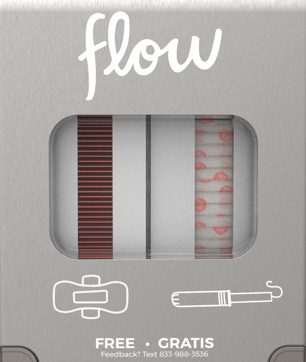Kent State’s Period Project continues to grow years after established

A dispenser with free period products is located in the women’s bathroom on the first floor of the library.
February 23, 2023
Four years after the Period Project was piloted on campus, the project has continued to grow.
The Period Project started off as student-driven and eventually gained support and partnership from the Women’s Center, the Undergraduate Student Government, the Division of Student Affairs and University Facilities Management.
In collaboration with Aunt Flow, founded by Ohioan Claire Coder, the Period Project was able to supply eight restrooms with menstrual product dispensers. The Division of Student Affairs later helped raise the total number of supplied restrooms to 16 in fall 2019.
These restrooms are located in the Kent Student Center, University Library, Student Recreation and Wellness Center, Rockwell Hall, Bowman Hall, Center for Undergraduate Excellence, Integrated Sciences Building, Henderson Hall and the Williamson House.
Cassandra Pegg-Kirby, the director of the Women’s Center, shed light on what it was like just a few years ago before free menstrual products were available on campus.
“When the pantry was at the Women’s Center, we’d see people coming in talking about having to make choices between being able to get food or get menstruation products so that they could go to class,” Pegg-Kirby said. “That’s something people shouldn’t have to choose between.”
When the Period Project was established to supply free menstrual products to restrooms across campus, students no longer had to make that decision.
“There is hope to expand and eventually have it fully funded by the university,” Pegg-Kirby said. “We have had requests from a number of departments and areas asking how they can get the products in their bathrooms as well.”
The impact that free period products have on students’ well-being is relieving.
“A lot of times, you don’t know when you’re going to get your period, or you can get products for people who need them.” Carla Thigpen, USG Senator for the Ambassador Crawford College of Business & Entrepreneurship, said. “Having that resource available, you know that there will always be products somewhere.”
Period poverty is a public health crisis that isn’t often talked about – the inability to afford or access menstrual supplies.
According to a national survey of 1,000 teens, one in five were not able to afford period products. Four out of five missed class or knew someone who missed class because they didn’t have access to period products.
From July 2021 to July 2022, the price of pads and tampons rose respectively to 8.9% and 10.8% due to inflation, according to NielsenIQ. On average, the cost of period products per cycle is around $20.
The Period Project is working to keep students in class, assure that there is no need to worry about financial resources and push back against the common stigma surrounding menstruation.
“I think talking about this more is helping alleviate some of the stigma associated with periods. I mean, without periods, there wouldn’t be people. It’s just the reality,” Pegg-Kirby said. “Having access to resources and support for reproductive health is beneficial for all of us.”
Jillian Schrift is a reporter. Contact her at [email protected].

























Jc Iarussi • Feb 24, 2023 at 11:00 am
Great project, great idea!